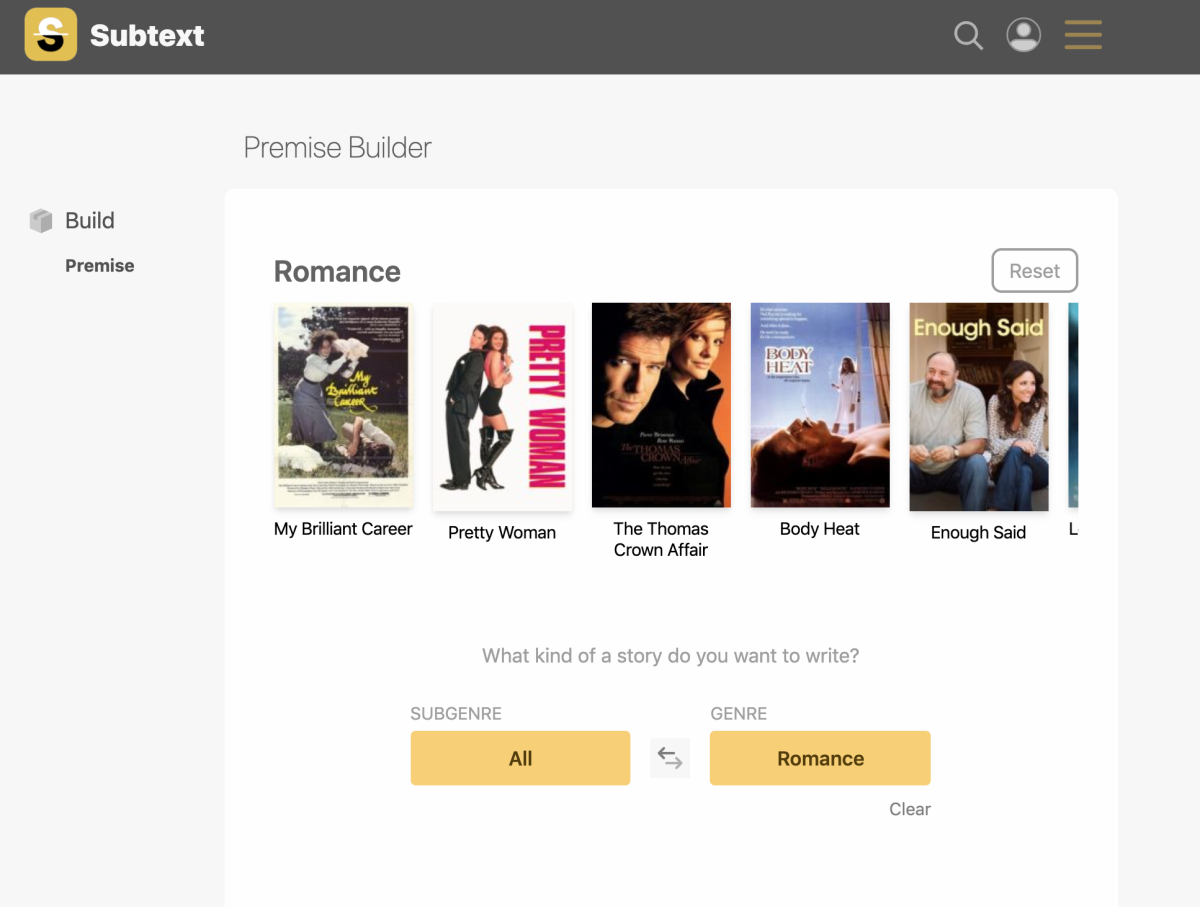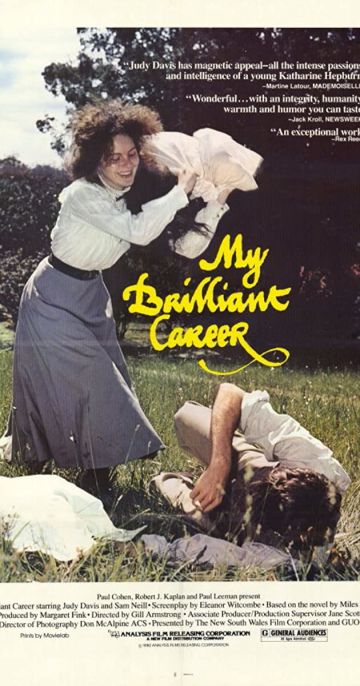
Why Story Structure Sometimes Feels Too Restrictive
The tendency of the Holistic to drift away from narrative structure
It’s probably not Earth-shattering to hear that a mindset more focused on the alignment of self would sometimes overlook matters of structure and order. With the dynamics of shifting relationships constantly in flux—yet continuously in the forefront—the Holistic removes the comfort food of clarity found in Outcome and Judgment off the menu—
—leaving the rest of us the responsibility of trying to make sense of it all.
One sees this drama play out within the Dramatica theory of story. The current application of the theory, Dramatica Story Expert, offers 32,767 different Storyforms (story structures) to choose from when writing your next story. 95% of the time, these 30K+ options are unique, with nuances extending from how the Main Character develops over time to the specific narrative Element that brings resolution to a story’s central conflict.
But then, there are those relatively few Storyforms which present themselves as precisely the same thing.
And we have the Holistic mindset to thank for it.
Managing Split Ends
Open up Dramatica Story Expert, and choose these Storypoints:
- Main Character Resolve of Steadfast
- Main Character Growth of Stop
- Main Character Growth of Be-er
- Main Character Mental Sex of Holistic
- Story Driver of Decision
- Story Continuum of Spacetime
- Story Outcome of Failure
Leave the Story Judgment open for now. Then choose:
- Objective Story Domain of Psychology
- Objective Story Problem of Avoid
With that, Dramatica narrows down the list of potential Storyforms from 32,767 to two.
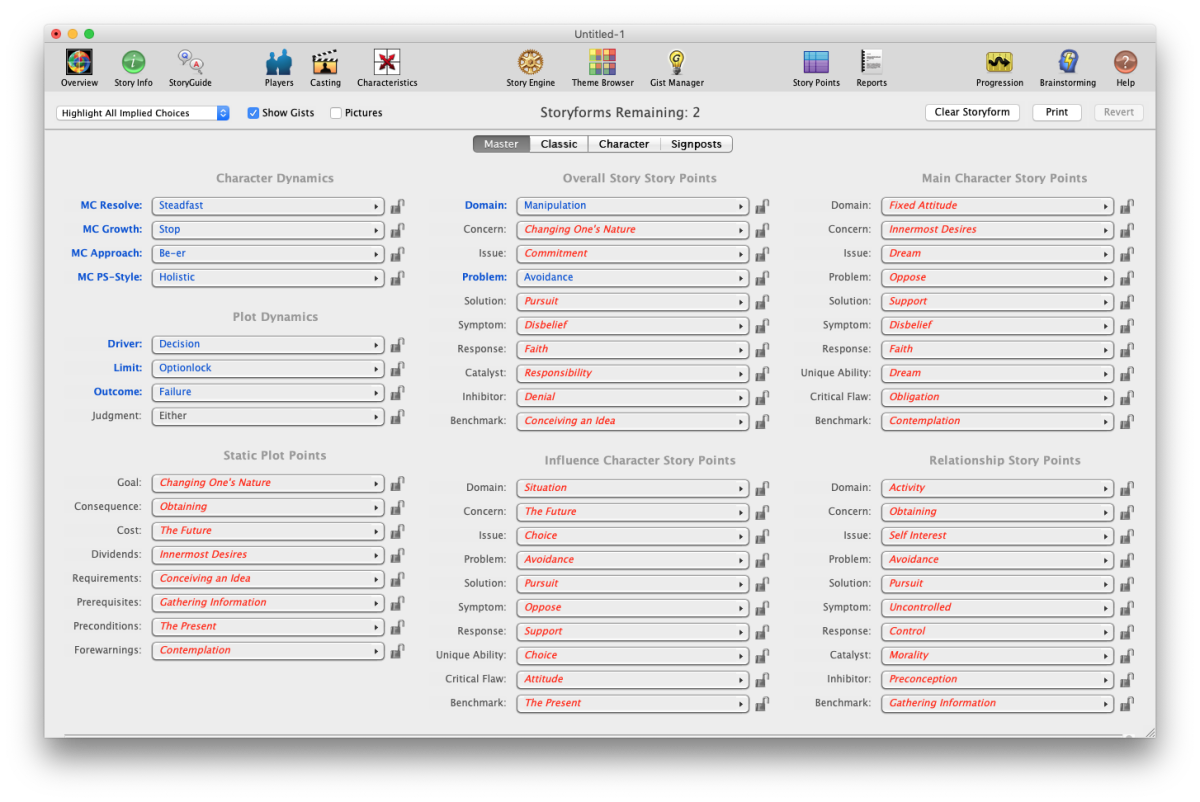
Look closely at how those two Storyforms compare, and you find something genuinely enlightening—both Storyforms appear to tell the same story.
I say appear because they only look that way from a Dramatica Story Expert point-of-view.
Select Good for the Story Judgment and watch how nothing changes on-screen.
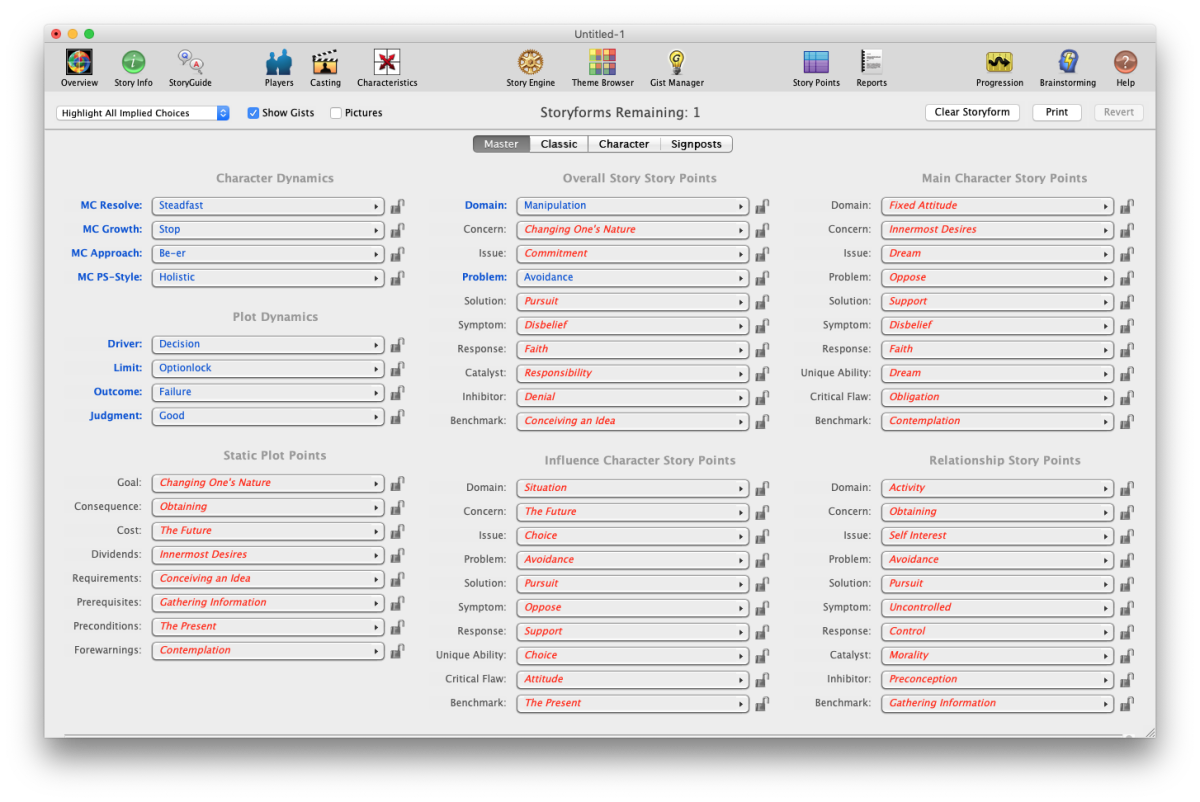
Switch it to Bad, and you find the same result.
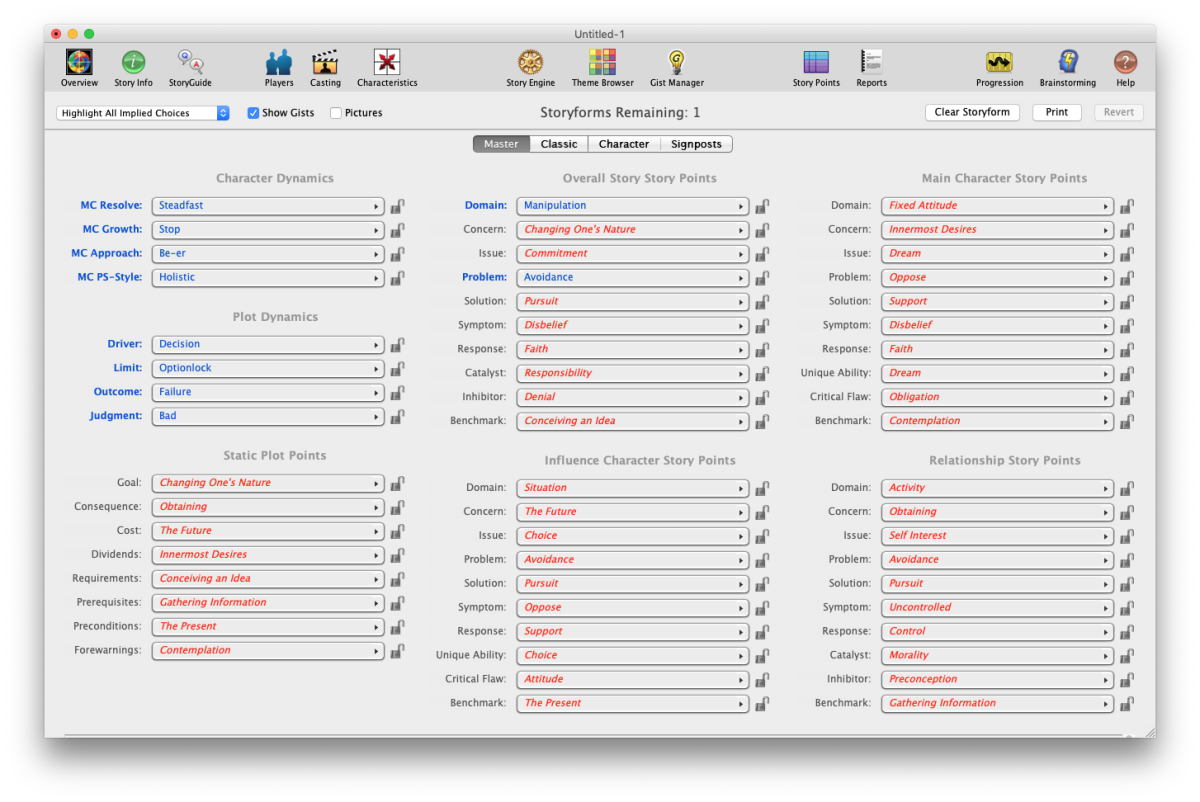
Blue points indicate selections we made; red signal implied Storypoints given our choices. Nothing in red changes when we adjust the Story Judgement. Dramatica Story Expert’s only indication of disparity between these two stories is the difference between the word “Good” and the word “Bad.”
Now, fire up Subtxt and open the Premise Builder. Select Romance for the Genre and then tap on My Brilliant Career—a film that shares the same set of Storypoints you entered into Dramatica above.
Instead of presenting you a sea of complicated terminology, Subtxt hands you a more approachable Premise:
::premise Confronting a commonly held disbelief amplifies your higher state of vibration, allowing you to break through resistance, and address your commitments with others. ::
A bit friendlier than Spacetime, Be-er, and Steadfast, yes? Granted, a “higher state of vibration” might sound foreign to you, but to a significant part of the population, the idea of getting on the right vibration connects with them.
The official Storyform of My Brilliant Career calls for a Story Judgment of Good. Take a look at the one-sheet for the movie, and you see why: a playful image, suggestive of one on a “higher” vibration.
Now, move down to the section marked Course, select Low Vibration, and watch what happens to the Premise:
::premise Descending into a lower state of vibration builds resistance with your being skeptical of marriage and clouds your relationships with commitments. ::

That’s the Subtxt difference. Instead of merely presenting Good or Bad and asking you to do all the deep cognitive work, Subtxt interprets the Storypoints to grant you the meaning of the Storyform.
What’s more, it gives you an idea of the actual difference between these two forms. Sure, structurally, they appear the same—but dynamically, they couldn’t be more different.
A Deeper Appreciation of Narrative Intent
The first Premise is decidedly “up” in emotion, the second most definitely “down.” One almost feels into the structure of a story by intent, which is rather quite exciting for a writer starting a new story. Know the emotional purpose of your story, and you know the structural makeup of your work.
With this heartfelt appreciation of the story’s message, one taps Build a Story and begins writing with intent and purpose. Instead of asking yourself, Is the Story Judgement Good or Bad?, ask What kind of emotional state do I want this Romance to reflect? And then choose accordingly.
Do you want to write a story of high vibration, or a story of low vibration?
Assumptions of Symmetry
The Holistic Mindset is not the direct opposite of the Male Mindset. No matter how much the Male mind would like to think it so, things aren’t black and white when it comes to human psychology. They are messy and given to chaos.
Awareness is a condition prior to conscious thought. If it weren’t, how could you be aware you were thinking? If you believe yourself locked behind your face or somewhere within your head, that thought must appear somewhere—and that somewhere is local awareness, or what Dramatica refers to as the Preconscious.
The awareness of a Male Mindset operates based on cause and effect; the Holistic Mindset trends toward the balance between things. Both Male and Holistic consciously think in terms of cause and effect or stability, but that local awareness can only be aware if one rests as the baseline. The Male mind uses cause-and-effect as its boot kernel, the Holistic balance, and relationship. You are aware by virtue of the measuring stick within your Preconscious mind.
The reason why you can’t observe any measurable change within Dramatica Story Expert given the set of Storypoints above is its bias towards the Male mindset. The program—like its Male brethren—is entirely blind to this alternative way of seeing the world. Even the idea of a “Judgment” is evidence of a black and white notion of Good or Bad.
Dramatica Story Expert’s blindspot is its greatest strength: the application’s ability to predict certain items of story structure and magically know what should happen next works because of its acceptance of these biased limitations. If it tried to be all things to all people, Dramatica Story Expert would be nothing to everyone.
Subtxt, in its current state, is a bridge between the accuracy of the Knowledge-based Male model that is DSE and future incarnations of the Dramatica theory of story. The fact that the Appreciations of Problem-solving Style and Goal are now Mindset and Intention within a Holistic story reflects a more inclusive design. Visual cues like Emojipoints further this idea of a more dynamic appreciation of narrative structure. The fluidity of continuous deployment and constant upgrading allows for a more exploratory path forward.
A practical application of the Dramatica theory still can’t be all things to all people, given our current technologies. Nevertheless, we can do a better job of bridging that gap in the interim.
Seeing the Other Side
If a Male approach tends towards order, then the Holistic trends towards chaos. Upheaval and turmoil dislodge one from the blindness inherent in a strict application of on or off, good or bad.
For those us trapped in a singular mode of awareness (translation: all of us), considering the other side of things seems pointless and exhausting. The Male thinks the Holistic malleable and too given to emotion; the Holistic finds the Male plain stupid.
With the Dramatica theory of story, and it’s further development through Subtxt, we appreciate the other side of things. We begin to see a way through conflict that measures the benefits of both isolation and inclusivity.
Through story, we make our world.
Download the FREE e-book Never Trust a Hero
Don't miss out on the latest in narrative theory and storytelling with artificial intelligence. Subscribe to the Narrative First newsletter below and receive a link to download the 20-page e-book, Never Trust a Hero.


